The Battle of the Bulge – also known as the Ardennes Offensive – was Germany’s last-ditch attempt at mounting a full-scale attack on the Western Front. The engagement, occurring from December 16, 1944 to January 28, 1945, was one of the bloodiest of World War II. The following are photos that show just how intense the fighting was.
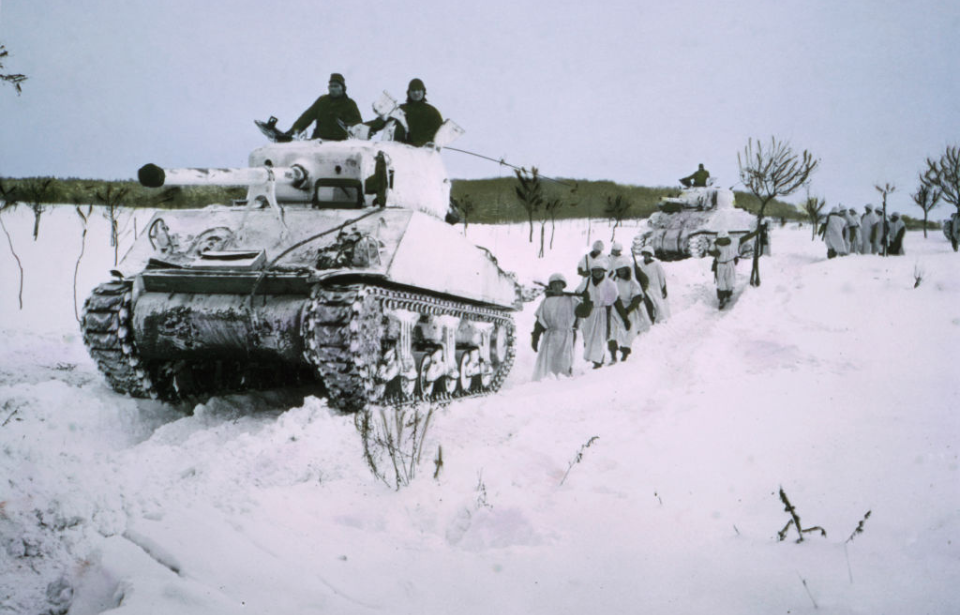
Battle of the Bulge
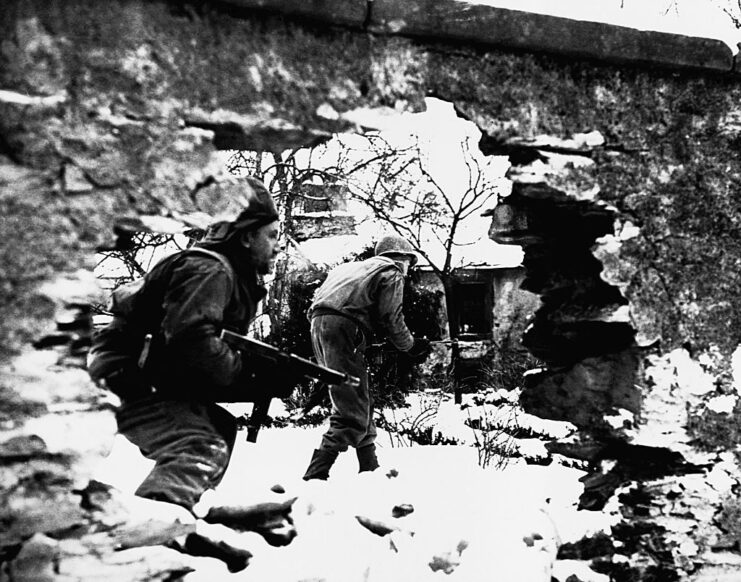
Photo Credit: CORBIS / Getty Images
The Battle of the Bulge involved well over one million combatants, with the intent being to prevent the Allies from accessing the Port of Antwerp, in Belgium. The Germans also hoped to break through the Allied lines and encircle the soldiers. Once this was achieved, the Führer hoped to force a peace treaty, independent of the Soviet Union, that heavily favored the Axis powers.
Following the D-Day landings, the Allies broke through Normandy and quickly advanced across Europe. While this surprised the Germans, it also caused the Allied troops to outrun their own supply chains. Just before the Battle of the Bulge began, they were exhausted, low on resources and spread thin. This prompted military leaders to halt their advance in the Ardennes, to allow the men to rest, resupply and bulk up with reinforcements.
Given the harsh terrain and dense forest, the Allies didn’t expect the Germans to launch an attack. Their lack of guard, as well as aerial reconnaissance being hindered by increasingly poor weather, meant the enemy could launch a surprise assault. They did so on December 16 with over 406,000 troops, more than 2,000 military vehicles, and 4,224 pieces of artillery and ammunition.
Echoing their earlier efforts, the Allies surprised the Germans with how effectively they defended against the attack. The rugged terrain that aided in their element of surprise also worked against them in that the Allies used it to their advantage. Before long, the Wehrmacht soldiers found themselves stuck.
By December 22/23, the fighting had reached as far as Foy-Nôtre-Dame, where the German troops became trapped in a narrow corridor. To make matters worse, the poor weather had finally lifted, allowing the virtually unopposed Allied air support to attack them and their supply lines.
By mid-January, the battle was lost for the Germans, who’d exhausted their efforts in Western Europe. The casualties were insurmountable, with between 67,000 and 100,000 suffered on the German side and the American total sitting near 81,000.
US infantrymen in the Ardennes
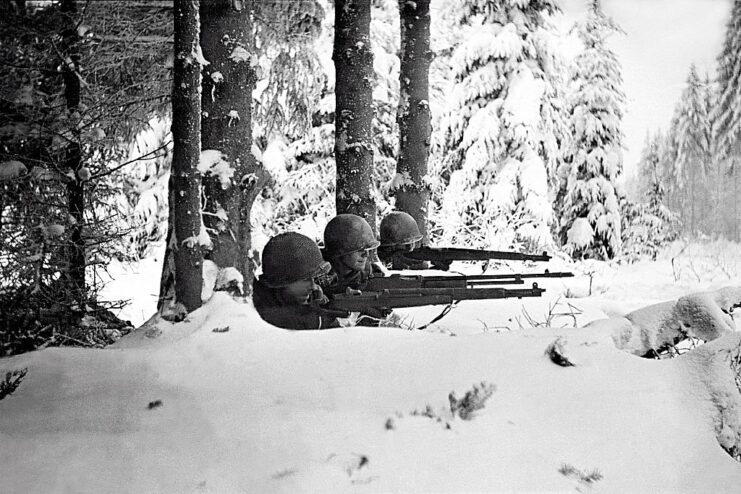
Photo Credit: Tony Vaccaro / Getty Images
According to the US Army Center of Military History, approximately 500,000 American soldiers participated in the Battle of the Bulge. They were vastly outnumbered by the enemy, with the Department of Defense saying the ratio of US to German troops was five to one.
Tanks and the Battle of the Bulge
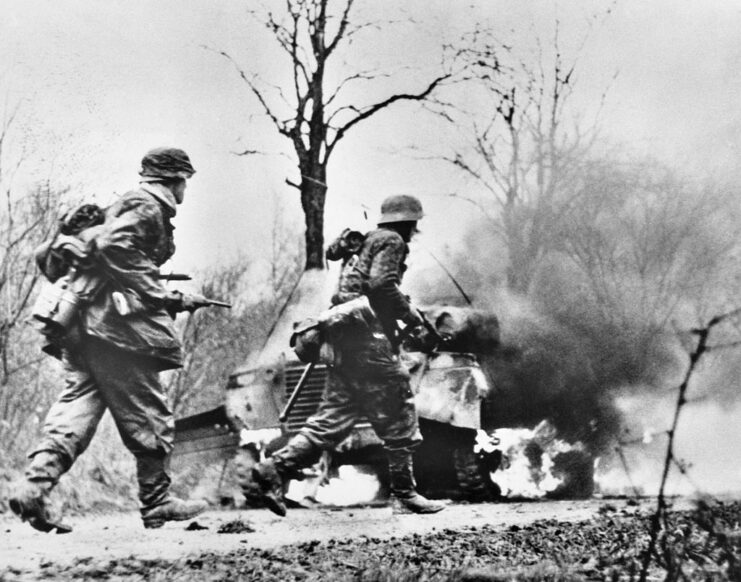
Photo Credit: CORBIS / Getty Images
The Battle of the Bulge was the final large-scale battle in Western Europe to feature tanks, and the dense forest and rough terrain definitely didn’t make it easy for them to be used. The Germans, in particular, threw much of their armored might at the Allies to little-to-no avail.
Among the most successful to feature in the fight was Cobra King, an M4 Sherman “Jumbo” that broke through the Germans in Bastogne over Christmas and provided much-needed relief to the besieged members of the 101st Airborne Division.
Villages and towns reduced to ruin
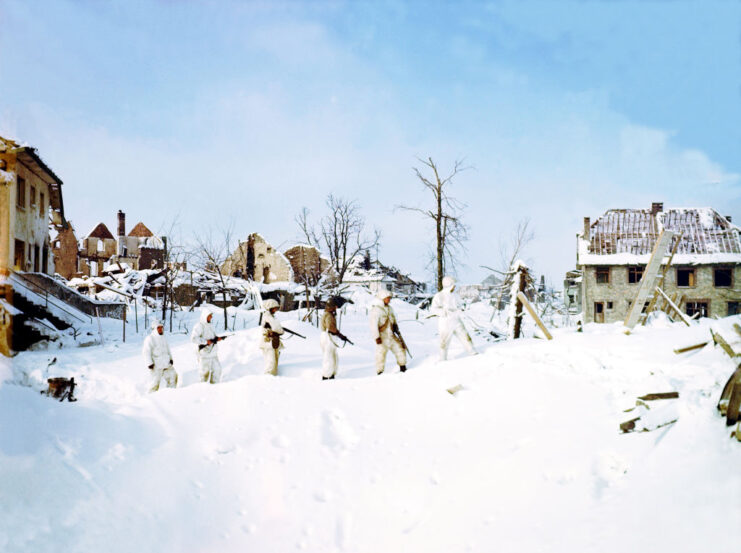
Photo Credit: Galerie Bilderwelt / Getty Images
Several Belgian towns and villages were reduced to ruins over the course of the Battle of the Bulge, including St. Vith, which was at the center of a heated engagement between the German 5th and 6th Panzer Armies and the US VIII Corps from December 16-21, 1944.
Up against the two strongest units the Germans had positioned in the Ardennes, the Allies didn’t stand a chance. While the defeat took several days longer than the deadline of December 17, the Wehrmacht forces were able to secure a win.
Prisoners of war (POWs)
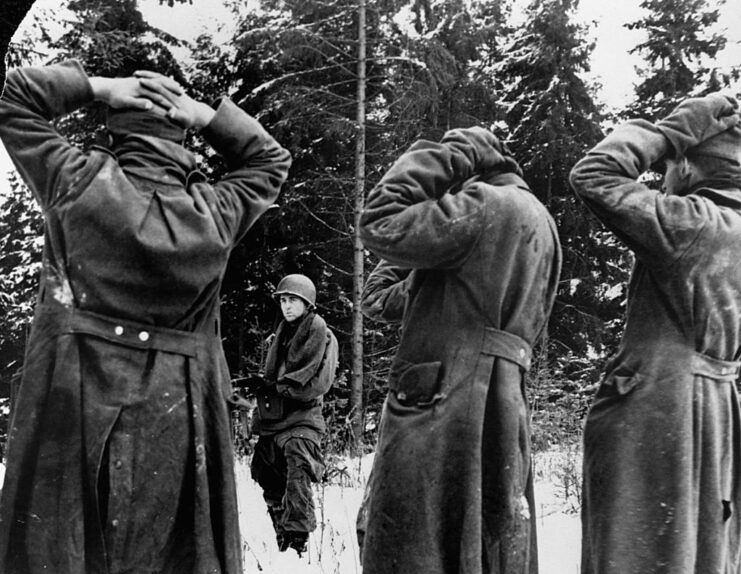
Photo Credit: CORBIS / Getty Images
As can be expected during wartime, prisoners of war (POWs) were taken during the Battle of the Bulge. Records state that about 30,000 Germans were taken prisoner by the Allies during the engagement, making up a significant portion of their casualty total. On the flip side, approximately 23,000 American soldiers were captured by the Germans during the fighting.
On the lookout for snipers
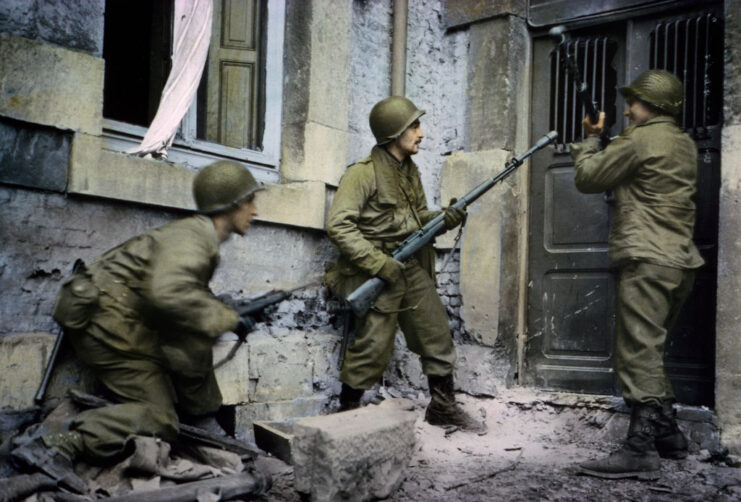
Photo Credit: History Archive / Universal Images Group / Getty Images
As with every other battle that occurred on land during the Second World War, both sides had to be on the lookout for snipers, whose expertise with a rifle could take out soldiers without their location ever being known.
One sniper to see action during the engagement was Ted Gundy, who served with the US 99th Infantry Division.
Celebrating Christmas amid the fighting
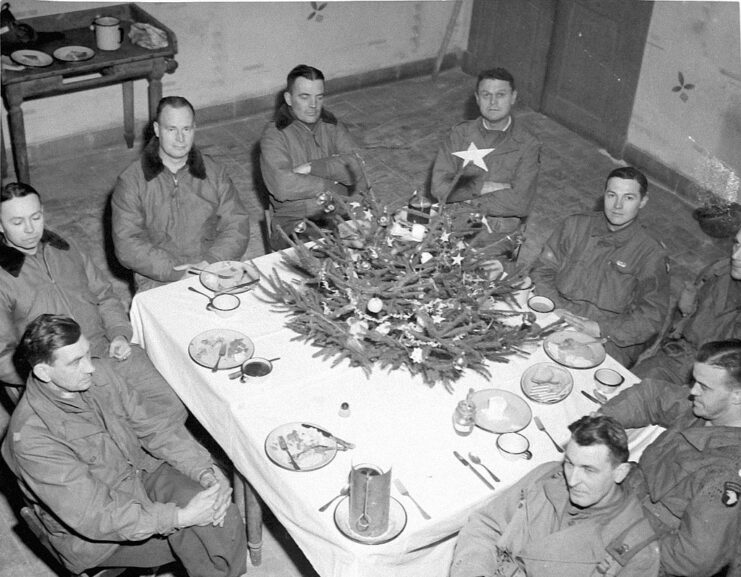
Photo Credit: Photo12 / UIG / Getty Images
Airborne troops participated in the Battle of the Bulge
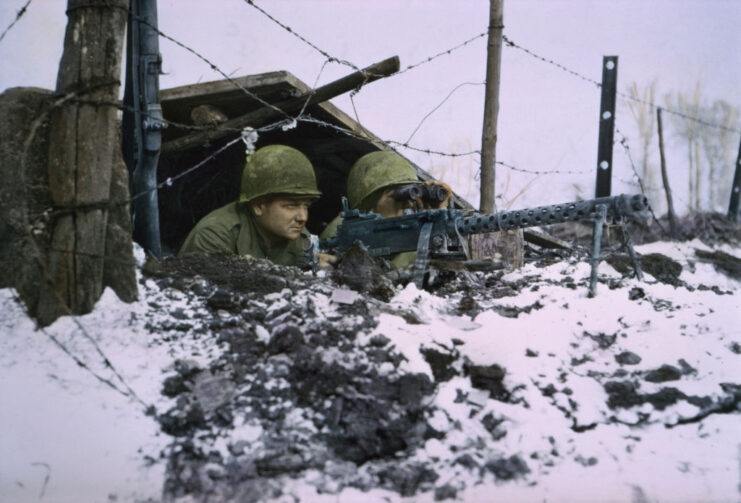
Photo Credit: History Archive / Universal Images Group / Getty Images
Innumerable airborne troops participated in the Battle of the Bulge, including the US 82nd and 101st Airborne Divisions. They engaged the Germans in some of the fiercest fighting of the engagement, with much of their encounters resulting in house-to-house combat.
Fighting in harsh weather conditions during the Battle of the Bulge
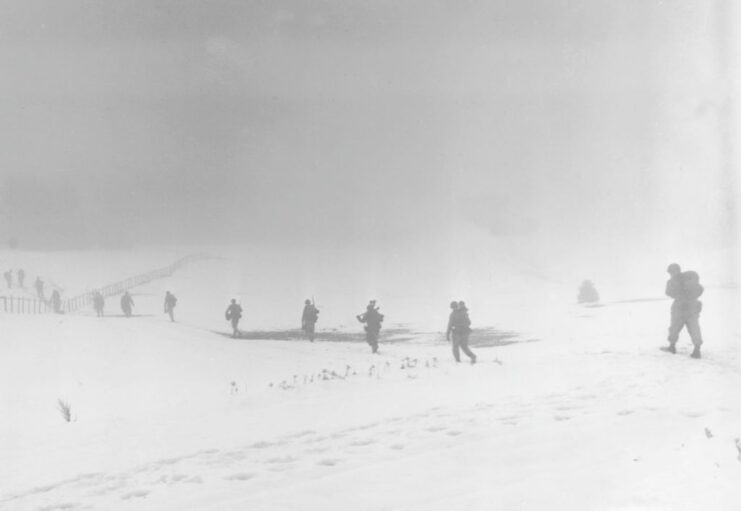
Photo Credit: Fotosearch / Getty Images
As aforementioned, the weather conditions were particularly harsh in the Ardennes region, and it took a while for the snow and strong winds to stop battering the troops. According to the Associated Press, there was “about 8 inches of snow on the ground and an average temperature of 20 degrees Fahrenheit (about minus 7 C.).”
While the poor weather initially helped the Germans in the early days of the Battle of the Bulge, it eventually caused them issues. What’s more, when it finally cleared, the Allies were able to call in reinforcements, which allowed them to secure a hard-fought victory.
Dropping supplies over Bastogne
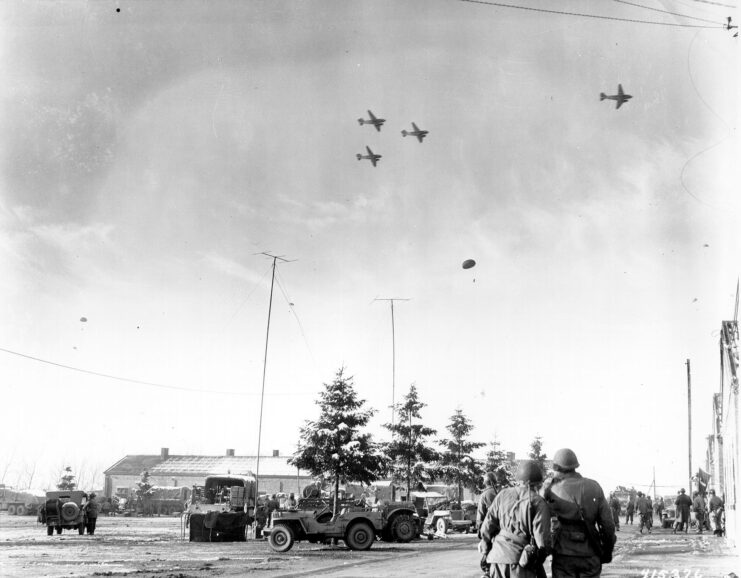
Photo Credit: U.S. Army Signal Corps Photographer / Wikimedia Commons / Public Domain
The Siege of Bastogne cut off members of the 101st Airborne Division from their comrades, and the poor weather meant that the Allies couldn’t resupply or perform ground attacks. When the German hold on the town was broken on December 26, 1944, the Americans were once again able to drop supplies.
Camouflaging into the snow
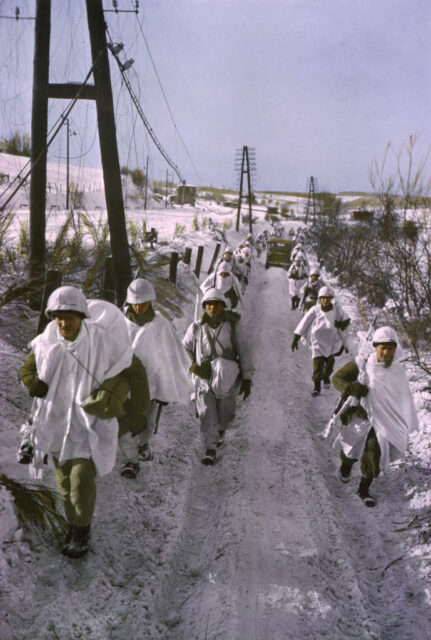
Photo Credit: History Archive / Universal Images Group / Getty Images
Given the Battle of the Bulge was fought in December and January, it’s not surprising that the troops had to navigate the snow-covered terrain. The powdery precipitation can be difficult to camouflage against, given typical military uniforms are green and brown, but some tactics were used to varying degrees of success, including snow camouflage capes, as seen above.
Operation Bodenplatte
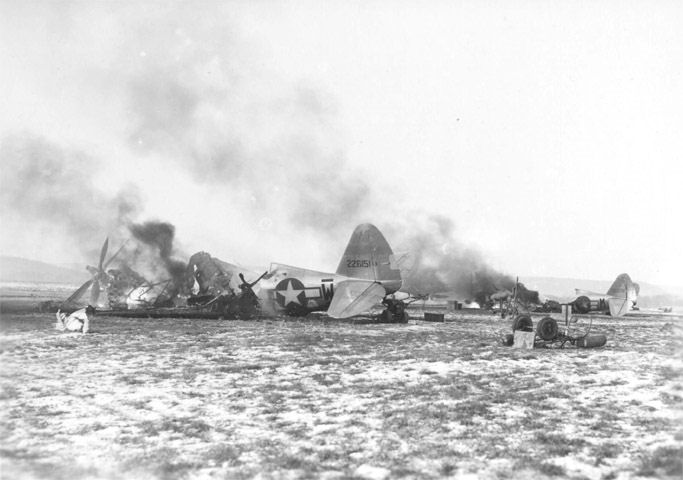
Photo Credit: United States Army Air Forces / Air Force Historical Research Agency / Wikimedia Commons / Public Domain
Operation Bodenplatte was launched as part of the Battle of the Bulge on January 1, 1945. The aim was to devastate the Allied air strength in the Low Countries, but it wound up crippling the Luftwaffe. Issues abound, with the Germans losing about 40 percent of their aircraft, many to friendly fire. What’s more, 143 pilots were killed or deemed as missing in action (MIA), while another 21 were injured and 70 were taken as prisoners of war.
The Allies fared much better. They only completely lost 250 aircraft. Approximately 150 of the ones that were damaged were easily repaired, meaning they were back in the skies within a week of the aerial assault.
British soldiers fought alongside the Americans
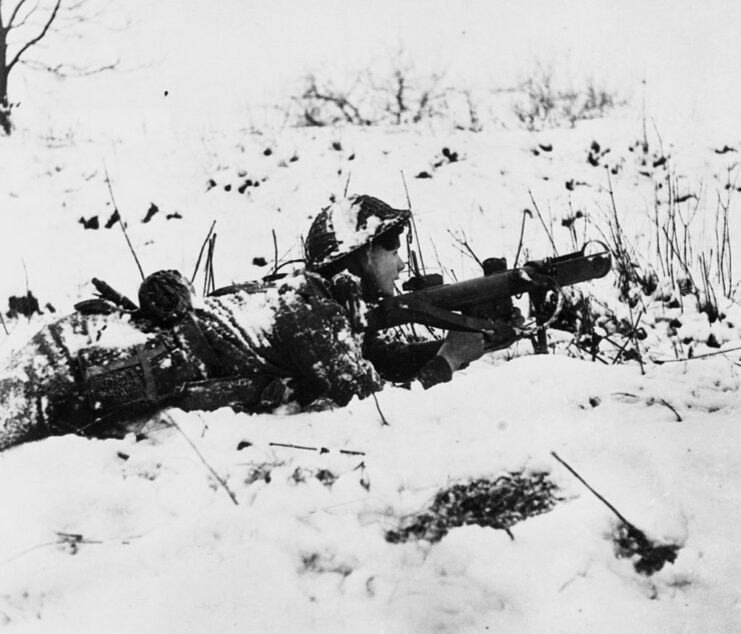
Photo Credit: CORBIS / Getty Images
While the majority of the discussion centers around the American soldiers who fought in the Battle of the Bulge, the fact remains that there were British troops present, as well. Approximately 55,000 – including the 1st Canadian Parachute Battalion – fought in the engagement.
George Patton and Anthony McAuliffe during the Battle of the Bulge
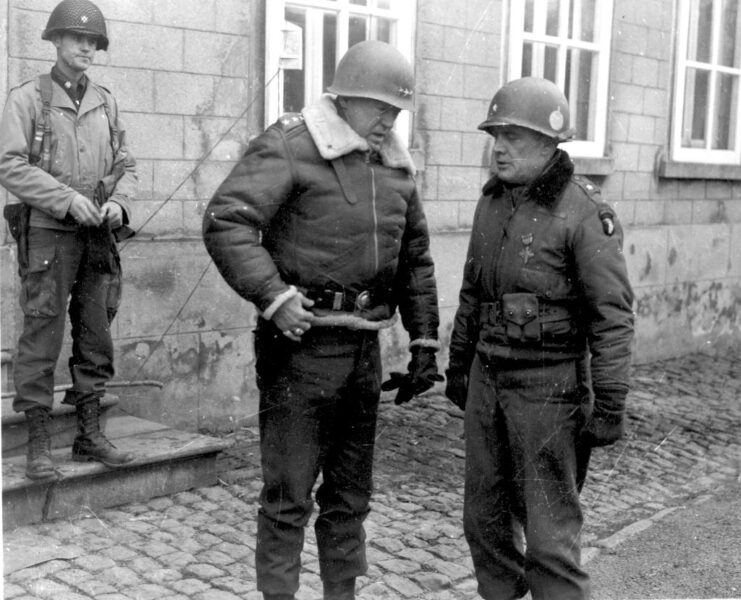
Photo Credit: PhotoQuest / Getty Images
News
The “Red Zone” – Land Still Abandoned Due to the Dangers Left by the First World War
The “Red Zone” – Land Still Abandoned Due to the Dangers Left by the First World War In the aftermath of the First World War, large areas of northeast France were left in ruin. Years of constant siege warfare along…
Before Becoming a Big-Name Actor, Richard Todd was a Paratrooper Who Fought at Pegasus Bridge
Before Becoming a Big-Name Actor, Richard Todd was a Paratrooper Who Fought at Pegasus Bridge Photo Credit: 1. Sgt. Christie, No. 5 Army Film & Photographic Unit / Imperial War Museums / Wikimedia Commons / Public Domain 2. Silver Screen…
The Potsdam Giants: A Prussian Infantry Regiment Of Nothing But Very Tall Soldiers
The Potsdam Giants: A Prussian Infantry Regiment Of Nothing But Very Tall Soldiers Frederick William I inspecting his giant guards known as The Potsdam Giants, a Prussian infantry regiment No 6, composed of taller-than-average soldiers. Frederick William I of Prussia,…
Ellen DeGeneres cuts a very casual figure as she drives around in her Ferrari
Ellen DeGeneres cuts a very casual figure as she drives around Montecito in her Ferrari… while preparing to embark on her stand-up tour Ellen DeGeneres cut a very casual figure as she made her way around Montecito on Tuesday morning. The…
“I’m heavily tattooed and keep getting rejected for jobs – it’s not fair”
Heavily tattooed OnlyFans star, 23, with multiple piercings on her FACE slams TJ Maxx for rejecting her for a job – accusing retailer of unfairly judging her dramatic look A woman has accused TJ Maxx of rejecting her for a…
All 75 passengers killed in plane crash after pilot let his chirldren control the plane
Praying, turning the engine off by accident and letting KIDS play with the controls: The worst blunders made by pilots before a crash revealed Every time we board a plane, we put our lives in the hands of the pilot….
End of content
No more pages to load











